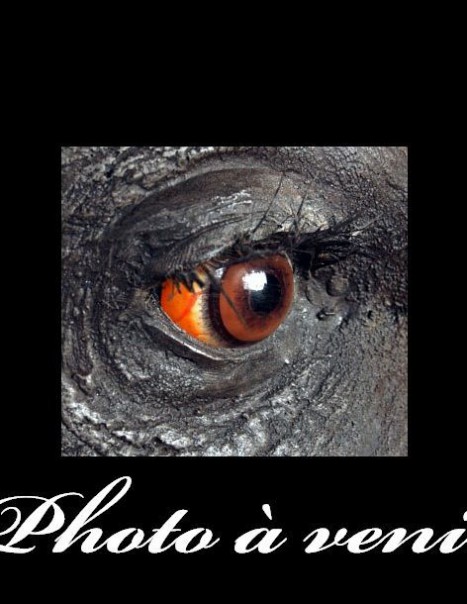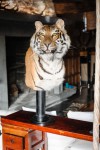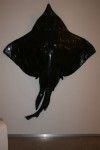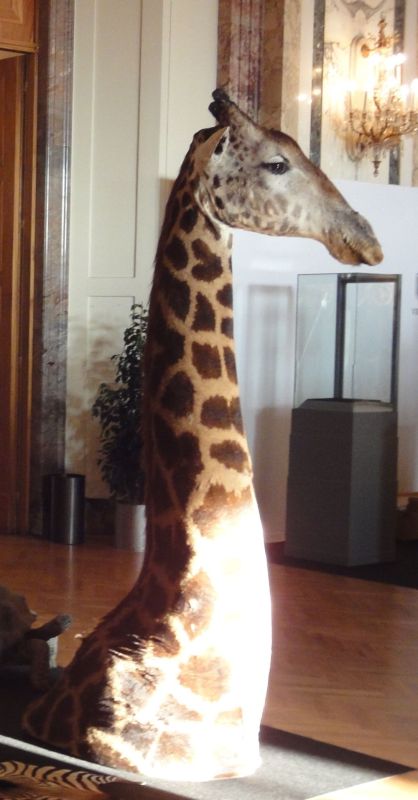Great Horned Owl – Bubo virginianus
Bubo virginianus – Great Horned Owl
The great horned owl is a large owl. Its head and face are similar to those of a cat because of the ears , the eyes and the head shape. It has two tufts of feathers above the eyes, resembling horns it uses as a body language. When it is angry, they are flattened, and when it is watching, they are fixed.
The upper parts are brown, mottled gray-brown. The underparts are rather dark, contrasting with the white throat. The plumage is pale gray with dark bands, except the white stripe on the throat, it has big eyes orange yellow and orange buff facial discs. They have eyes fixed and can not move, that’s why their head can rotate 270 degrees, thanks to the flexibility of the spine at the rather long neck and beak is hooked and black.
The legs and long toes are feathered to the toes. Owls have four toes, three in front and one behind. The outer toe is reversible, giving two fingers in front and two behind. This allows the bird to hold onto a perch and protect it from a possible fall. The female is similar but larger than the male.
The immature resembles adults, with smaller clumps and less apparent.
It is threatened by hunting, traps, road accidents and electrocution. Only 50% of young people leaving the nest come to spend their first year, it is widely used and recognized as useful in the control of pests such as mice and rats.
It lives in dense forests, in the deserts, plains, cliffs, rocky canyons and urban parks, from the North America to Central America and South America. The northern birds may migrate south. It becomes active at dusk and at night. It has binocular vision, a hundred times more developed than human vision.
To hunt, it lands on perches, seeking prey. When hunting from a perch, it plunges wings folded, before entering the prey it kills instantly.
It feeds on a wide variety of animal prey, mostly mammals such as rodents, rabbits, hares, squirrels, raccoons, dogs and domestic cats, porcupine, but also birds: owls, pheasants, crows, turkeys wild, red-tailed hawks, great blue heron, ducks, swans and birds, reptiles, snakes, turtles, lizards, amphibians, and young alligators, also fish, large insects, scorpions, crayfish, worms, and spiders and even the skunk. It regurgitates pellets containing bones, fur and feathers. They are grayish black, compact, and regurgitated about 6 to 8 hours after feeding. It can hunt prey two to three times heavier than him. It flies silently, which the great advantage.
The couple stays together for life, but separated after the nesting season to live alone, their lifespan is estimated at 20 years. They sleep during the day in hollow rocks or on the high branches of a tree. The great horned owls do not build nests. It uses the nests of other birds such as eagles, crows and herons. It can also use hollows in trees or rocks, in abandoned buildings or on artificial platforms. These nests are large, made with sticks and lined with grass and feathers.
The female lays 2-4 white eggs. Incubation lasts about 26 to 35 days, by female which is protected and fed by the male during this period. Chicks hatch altricial and covered in white down. Young leave the nest to the neighboring branches at the age of six or seven weeks. They can fly at nine or ten weeks. They are fed for a few weeks and weaned slowly.
Young disperse in the fall. The same couple can keep its territory for eight consecutive years, the partners split outside the breeding season. Young reach sexual maturity at the age of two years. This species produces only one brood per year.





